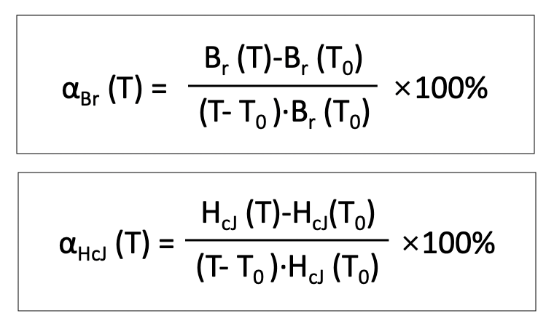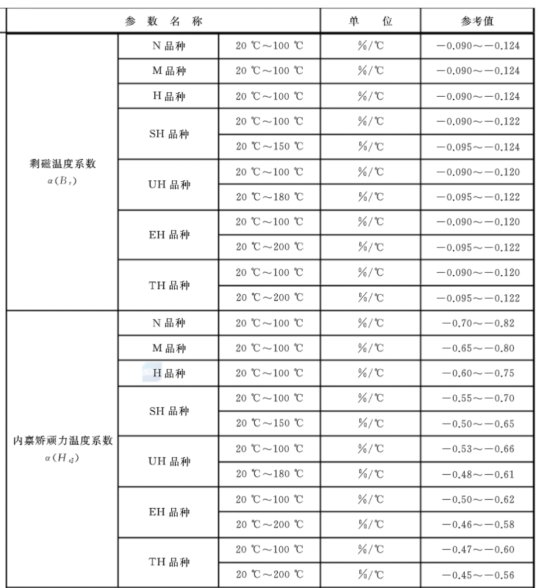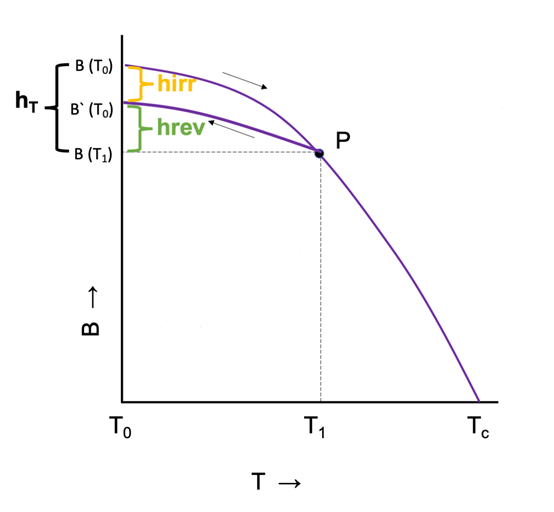Permanent magnets are generally used as a magnetic field source, in a certain space to provide a constant magnetic field, for some precision instruments and magnetic devices, the stability of the magnetic field of the magnet is critical, it will directly affect the accuracy and reliability of the instrument.
1. Stability of permanent magnets
Causes changes in the magnetic properties of the external conditions of temperature, time, electromagnetic fields, mechanical vibration or shock, rays, chemical effects, etc., accordingly, the stability of the magnet includes the temperature stability, time stability, vibration and shock stability, electromagnetic field stability and chemical stability and other aspects of the performance requirements, generally described in terms of changes in the performance parameters of the magnet (such as the temperature of the residual magnetism per 1 ℃ change of a few percent, how much the annual decay of the magnet under room temperature conditions). (e.g. how much the remanent magnetization changes per 1℃ rise in temperature, how much the remanent magnetization of the magnet decays per year at room temperature).
Changes in magnetic properties caused by changes in environmental conditions are mainly in two areas.
1. Changes in magnetic properties caused by changes in the structure of the magnetic domains (also known as magnetic aging), which are reversible and can be restored when the magnet is magnetized or magnetized again.
2. Changes in magnetic properties caused by changes in the microstructure of the magnet (also known as tissue aging), which are irreversible and cannot be recovered when the magnet is magnetized or magnetized again.
Any change in the magnetic properties of magnets caused by changes in environmental conditions include both magnetic aging and tissue aging.
The use of magnets in different environmental conditions, the required performance stability is also different, for example, the use of spacecraft magnets are generally concerned about the vibration and shock conditions of the performance stability, but also requires in the ray, temperature and time conditions of stability; to work in the acid, alkali environment of the magnets, the general requirements of its chemical stability; and in the working environment of the temperature changes in the place, are concerned about the magnet whether it is with temperature Stability.
2、Temperature stability of permanent magnets
Instruments and equipments made of permanent magnetic materials generally cannot work at a constant temperature, and the change of ambient temperature has a direct effect on the magnetic properties of magnets. In order to make the instruments and equipments work normally when the temperature changes, when designing the magnetic circuit, it is necessary to know the amount of change of the magnetic properties of the magnets with the temperature.
In order to quantitatively reflect the degree of influence of temperature on the performance of magnets, some temperature stability parameters related to the ambient temperature have been defined, such as the temperature coefficient of remanent magnetization αBr, the temperature coefficient of the endowment coercivity αHcJ, the reversible loss of the open-circuit flux density Lrev and the irreversible loss of Lirr, the reversible temperature coefficient of the open-circuit flux density, and the heat-resistant temperature or the maximum continuous operating temperature Tm, etc., among which, the remanent magnetization temperature coefficient αBr, and the temperature coefficient of endowment coercivity αHcJ are one of the performance indexes that must be provided by commercial permanent magnets.
Temperature coefficient of remanent magnetization and temperature coefficient of endowment coercivity
The temperature coefficient is, as the name implies, the relative rate of change of a physical quantity with temperature, and the temperature coefficient of remanent magnetization and the temperature coefficient of endowment coercivity are defined as follows for the temperature interval from the reference temperature, T0, to a certain high temperature, T, and are expressed in units of %/°C.

Among them, Br(T) and Br(T0) are the remanent magnetization at temperature T and reference temperature point T0 respectively (HcJ is the same), usually room temperature or 20℃ is chosen as T0, while the value of high temperature T needs to be determined by both supply and demand according to the usage environment. If αBr is positive, it means that the remanent magnetization increases with increasing temperature; if it is negative, it means that the remanent magnetization decreases with increasing temperature.
The following chart shows the reference values of the temperature coefficient of remanent magnetization and the temperature coefficient of endowed coercivity for each grade of permanent magnet specified in the national standard for sintered NdFeB permanent magnet materials (GB/T 13560-2017).

Reversible Temperature Coefficient
Magnets typically operate in an open circuit with an air gap, and the temperature-dependent characteristics of the open-circuit remanent magnetism (or open-circuit flux) are of more practical significance. When the ambient temperature starts to increase from room temperature T0 to a given temperature T1, the open-circuit flux decreases from B(T0) to B(T1), and if the temperature returns to room temperature T0, the open-circuit flux generally recovers to a value of B`(T0) that is somewhat lower than B(T0), as shown in the figure below. Experimentally, it has been shown that when the temperature is varied repeatedly between T0 and T1 and ΔT is not very large, the change in B is linearly reversible, i.e., the PB`(T0) line in the figure below.

The total flux loss from room temperature to high temperature throughout the warming process is hT = (B(T1) - B(T0))/B(T0) × 100%, which can be decomposed into two components: reversible flux loss hrev = (B(T1) - B`(T0))/B`(T0) × 100% and irreversible flux loss hirr = (B`(T0) - B(T0))/B( T0)×100%.
From the PB`(T0) line, it can be seen that the variation of B is linear when the temperature varies in the range of T0 to T1. The average reversible loss of open-circuit flux is expressed in terms of the reversible temperature coefficient α.

Within the larger concept of temperature coefficient, special attention should be paid to distinguishing the difference between the smaller concepts of temperature coefficient, reversible temperature coefficient and irreversible temperature coefficient.
Aging can significantly reduce hT, hirr, hrev, and α. Aging of permanent magnets (heating at a certain temperature for a certain period of time) prior to use or testing can eliminate the unstable organization of the magnet. The temperature and time of the aging treatment need to be determined according to the type of magnet, its use, and other aspects.
The reversible temperature coefficient αB (T) or remanent temperature coefficient αBr (T) depends on the endowed magnetism of the material. By adding some elements, the temperature coefficient of the magnet can be changed by changing the relationship between the saturation magnetization intensity and temperature of the magnetic main phase. For example, replacing Fe with part of Co in NdFeB magnets can significantly improve the Curie temperature of the main phase; replacing part of Nd with Dy, αB (T) will also be improved. improved. Click on the role of elements such as dysprosium and gadolinium to learn more.











